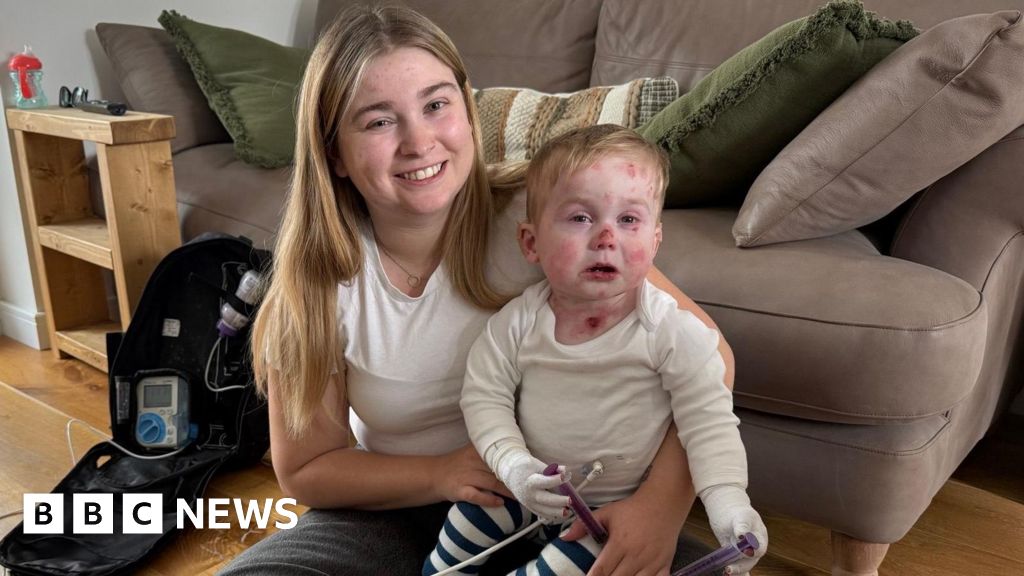Navigating Special Needs Planning: A Journey of Hope and Understanding

As parents of an autistic son, my husband and I initially found it incredibly challenging to come to terms with his diagnosis. During the early years of his life, we noticed that developmental milestones were being missed. The differences between our son, Tristan, and his peers became increasingly apparent. It was impossible to ignore, deny, or rationalize awayour beautiful boy was profoundly autistic.
Tristan was offered a place at a specialized school catering to children with autism. Each Wednesday morning for the entire year, I had the opportunity to attend sessions at the school, where I learned how to better interact, play, and communicate with my son. This experience was invaluable, providing me with insights into what his future might hold. As I came to understand the realities of his condition, I faced the stark likelihood that Tristan might never speak, hold a job, drive a car, or even have a family of his own. The thought that he could depend on us for his entire life weighed heavily on my heart.
We made a solemn promise to take care of him for as long as we were able. However, a worry that became all-consuming was the haunting question: what would happen to our son when we were no longer around? This concern loomed over us for several years, leaving us restless.
In 2016, while Tristan was six years old, I serendipitously discovered the concept of special needs planning. At a networking event, a chartered financial adviser mentioned disabled persons trusts, a term I was unfamiliar with but which triggered my interest. I soon learned that these trusts are among the most common legal tools designed to protect and support individuals with disabilities.
A disabled or vulnerable persons trust allows assets to be held for the benefit of a disabled individual without them receiving the money directly. Instead, the funds are managed by designated trustees who have the responsibility of ensuring that the assets are used to benefit the beneficiary. The other prevalent type of trust is a discretionary trust, and families must evaluate their unique circumstances to determine which type best suits their needs.
Establishing a will and trust forms the cornerstone of any effective special needs plan. However, I quickly realized that merely documenting wishes was not enough; understanding the nuances of special needs planning was crucial.
At that time, I was unaware of the specialized trusts that could provide protection for my sonwho is now 15 years old. It was unsettling to acknowledge that it took a random encounter for me to stumble upon this important information.
During that same networking meeting, a solicitor shared a poignant story about a beneficiary who was unable to legally accept an inheritance due to a lack of mental capacity. This revelation hit me hard; I had never considered that Tristan might fall into this category. I had previously assumed that simply naming him in my will would guarantee that he would receive his inheritance. This understanding opened a floodgate of questions about our financial future and planning.
As I drove home, my mind was racing with thoughts about our will, finances, and plans for the future. I had named Tristan as a beneficiary, yet I now recognized that this well-intentioned decision could inadvertently lead to difficulties for him. How could we ensure his future security? How could we safeguard his interests? What if my older son had to take on responsibility for him? Did we need to secure means-tested care for him? My mind was filled with countless questions, and a sense of urgency began to take hold.
Realizing that the financial and legal frameworks my husband and I had put in place could potentially create serious complications for Tristan left me feeling overwhelmed. If Isomeone who was a chartered financial adviserstruggled to navigate these complexities, what hope did other parents have?
Panic set in, propelling me to dedicate myself to learning more about special needs planning. I delved into technical manuals, consulted with experts in various fields, and, through this newfound knowledge, met with three solicitors. After careful consideration, I chose one and began the process of establishing a special needs plan for my son.
Along with creating a will, I developed the financial elements of the plan, which turned out to be an empowering exercise. For every misstep I discovered about planning for Tristan, I found two viable solutions that made far more sense.
Since then, I have facilitated discussion groups for parents at Tristans school, focusing on the three main challenges that families need to be aware of. Vulnerable dependents often find it difficult to access their inheritances; they may become even more vulnerable once they receive money; and being directly inherited funds can lead to the loss of essential means-tested benefits, care, or support.
These three challenges often converge, creating a perfect storm that can have devastating consequences and can be difficult, if not impossible, to reverse.
At every parent event I host, I hear heartbreaking stories similar to those shared by one mother who was grappling with one of these challenges. Her niece, who lacked mental capacity, was unable to access an inheritance that could secure her future, threatening her means-tested residential home placement. Despite her efforts to help, they faced the prospect of court intervention.
Tragically, the issues stemming from improper wills, unsuitable trusts, or the absence of a will altogether consistently rank as the leading cause of avoidable harm that I encounter in my practice. Many parents wish to leave money for a vulnerable dependent but are often unaware of the necessity of considering specialized wills and trusts. This oversight certainly hadnt occurred to my husband and me when we first learned about our sons diagnosis.
For any parent or caregiver new to the realm of special needs planning, I offer the following guidance:
- Doing nothing is typically not an option. Conventional financial planning may not adequately serve special needs families like ours, often leading to funds landing in the hands of the most vulnerable and causing irreparable damage.
- Begin by envisioning a positive future for your loved one. Can you articulate what their ideal future would look like? Document this vision.
- With a clear vision in hand, seek out a reputable and qualified solicitor who has experience in drafting wills and trusts for vulnerable individuals. Be prepared with questions and communicate your goalsmost caring professionals welcome inquiries.
- Drafting a letter of wishes is a cost-free step. While not legally binding, it provides guidance on your intentions for when you are no longer present, which can be invaluable for those left behind.
- Consider reaching out to local parent-carer forums or charities that offer courses on wills and trusts for special needs. Gaining a basic understanding of these technicalities can help you navigate what is often an emotional and complex journey.


















